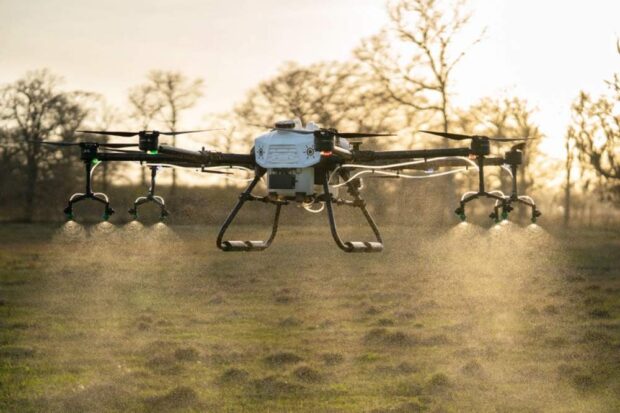Farming drone company Hylio has received Federal Aviation Administration approval to deploy up to three drones weighing more than 55 pounds simultaneously with a single pilot and without visual observers, which also allows for nighttime operations.
The company said the approval lays the groundwork for customers and other operators to file for the same permissions.
Hylio is believed to be the first company in the U.S. to receive such approval, a decision Hylio called a monumental achievement that sets an important precedent for the commercial unmanned aircraft system (UAS) industry.
“This is a critical step forward in making UAS a viable option for even the largest-scale farming operations,” said Arthur Erickson, Hylio co-founder and CEO. “I am proud that Hylio has made history, forever changing farming in America for the better by drastically multiplying productivity for spraying and spreading applications, while simultaneously offering a solution for the increasing labor shortages in agriculture.”
Hylio said the ability to swarm drones could drastically increase productivity for farmers.
One of the company’s 55-pound models can treat 50 acres per hour. With the new approval, one operator could treat 150 acres an hour. It also allows farmers to multitask, by using one drone to plant seeds while two others spray treatments at the same time.
“Swarming drones over 55 pounds has long been the desperately sought holy grail in the agricultural industry,” said Ericksson. “For years, the ag sector has been severely hindered due to the fact that only smaller, under 55-pound drones could be swarmed, leaving much of the potential productivity on the table.
“The vast majority of agricultural drones in use today exceed 55 pounds in weight but could not be used to their full potential until Hylio paved the way with this exemption. This game-changing precedent lays the groundwork for Hylio customers and other drone users to obtain permission to swarm 55-plus pound UAS, dramatically multiplying the productivity of crop operations.”
Read the full waiver here (reference FAA docket number FAA-2023-1833).
Source: IOT World Today

